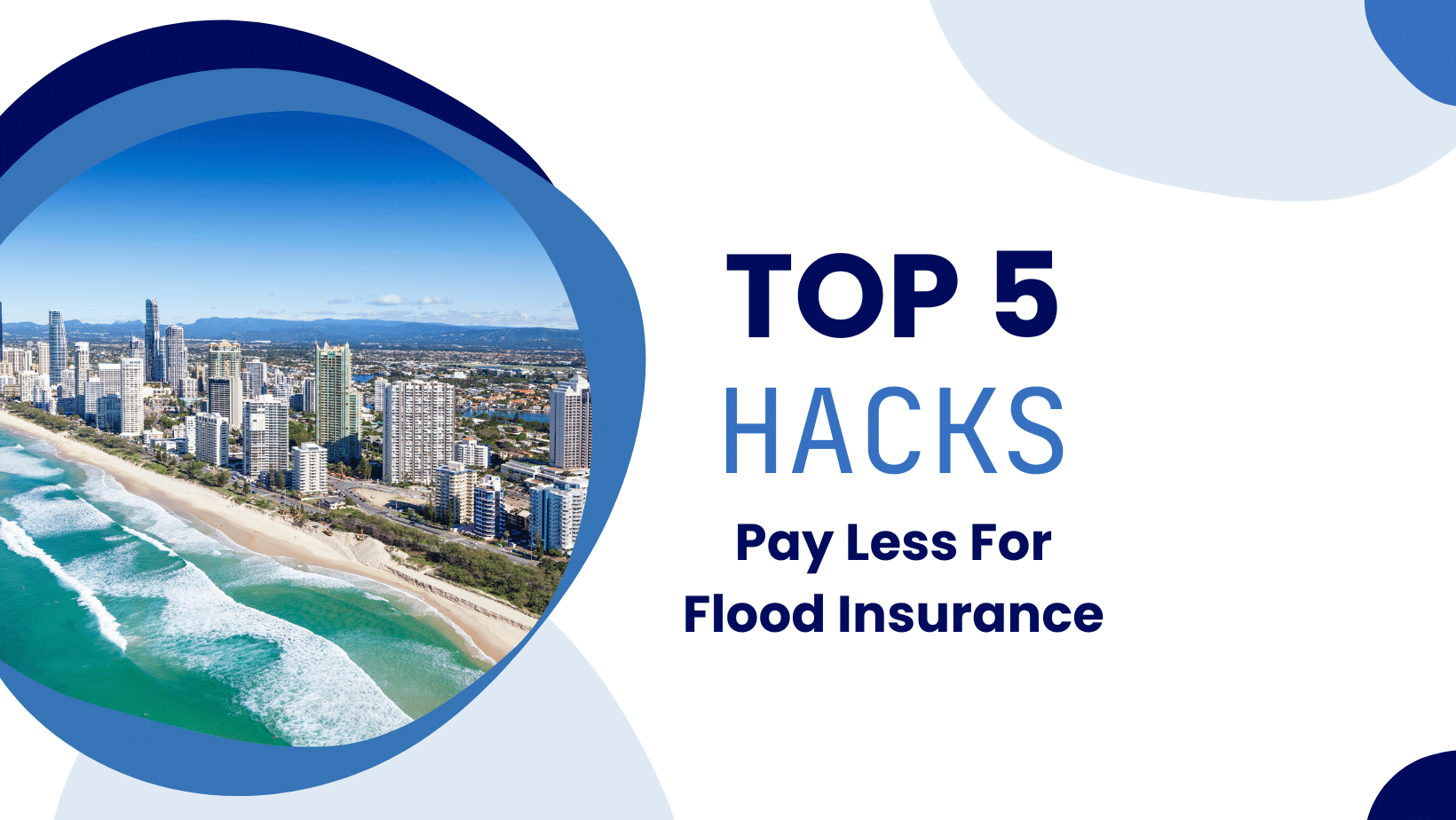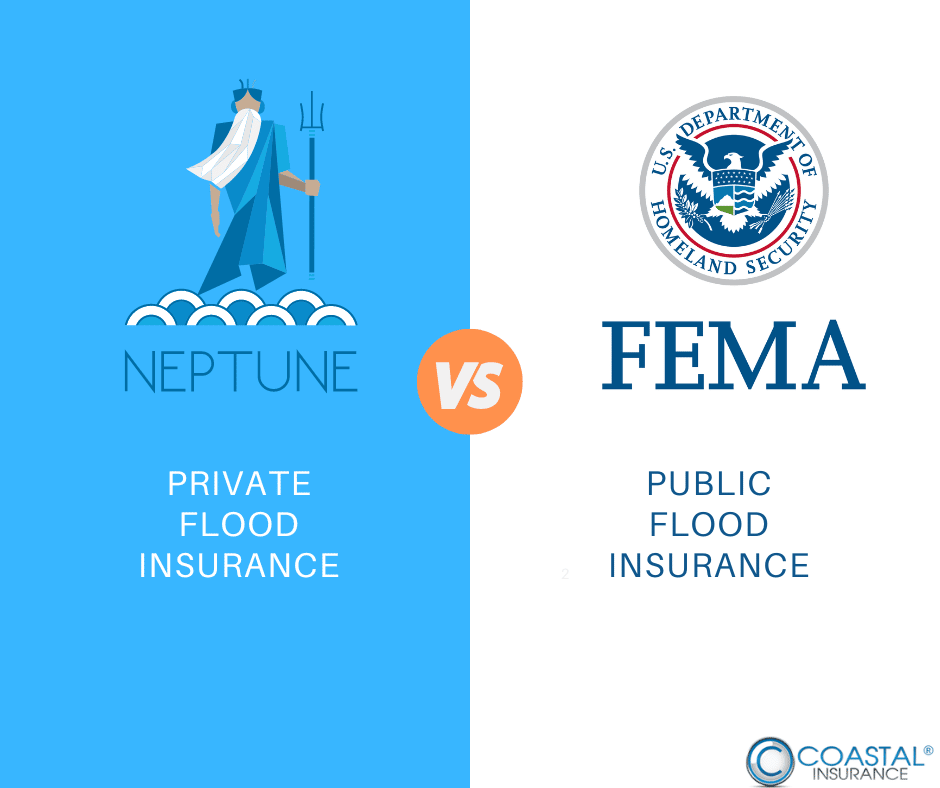Maine Flood Insurance
Get Top 10 Flood Insurance Quotes Online


Maine Flood Insurance as Easy as 1-2-3
AS SEEN ON:

AS SEEN ON:

Maine Flood Insurance Rates
Get the Best Flood Quotes in Minutes!

Private Maine Flood Insurance Alternatives in Maine
In Maine, where the threat of flooding is as diverse as its landscape, private Maine flood insurance emerges as a valuable alternative to the National Flood Insurance Program (NFIP). This option is particularly appealing for homeowners seeking flexibility beyond the NFIP’s parameters. Private insurers offer a range of policies that can provide higher coverage limits, broader coverage options, and potentially more competitive pricing, tailored to the unique needs of Maine residents.
Unlike the NFIP, private Maine flood insurance policies are not one-size-fits-all. They can be customized to include additional living expenses and broader coverage for property and possessions, offering more comprehensive protection against flood damage. Moreover, some private policies may have shorter waiting periods than the NFIP’s standard 30 days, allowing for quicker coverage activation after purchase.
For Maine homeowners, navigating the private insurance market requires careful consideration. Assessing the financial stability of insurers, understanding policy specifics, and comparing costs and coverages are critical steps to ensure that the chosen policy offers the best possible protection.
As the landscape of flood risk continues to evolve, especially with climate change influencing weather patterns, the flexibility and adaptability offered by private Maine flood insurance make it an increasingly attractive option for comprehensive flood risk management in Maine.
Beyond the Basics: Maine Flood Insurance vs. Maine Homeowners Insurance
Navigating the ins and outs of insurance policies can be a complex endeavor, particularly when distinguishing between Maine flood insurance and homeowners insurance. In Maine, where the beauty of its diverse landscapes is matched by the variety of its weather, understanding this distinction is not just helpful—it is essential.
Homeowners insurance is the bedrock of property protection, covering losses and damage to personal residences and possessions within from events like fire, theft, and certain types of water damage. However, it is the “certain types” where flood damage often finds itself excluded. Contrary to common belief, damage from flooding—whether from overflowing rivers, torrential rains, or storm surges—is not typically covered under standard homeowners policies.
Enter Maine flood insurance, a specialized form of coverage designed explicitly to protect homes and belongings from loss due to flooding. In Maine, where coastal surges and river floods are common, flood insurance becomes a critical layer of protection for many. Governed by the National Flood Insurance Program (NFIP) and available through private insurers, flood insurance ensures that homeowners have recourse in the event of flood-induced damage.
The key to navigating these waters is understanding the specifics of each policy. For example, Maine flood insurance requires a separate policy purchase and often includes a waiting period before coverage takes effect, a crucial factor for timely protection. Additionally, the scope of coverage between the two insurances varies, with Maine flood insurance focusing on recovery from direct flood damage to the structure and contents of homes.
For Maine residents, the lesson is clear: Equipping your home with both homeowners and Maine flood insurance provides a comprehensive safety net against the unpredictable. By understanding the unique roles and limitations of each policy, homeowners can ensure they are adequately protected, come rain or high water. This knowledge is not just about safeguarding property; it is about securing peace of mind in the face of Maine’s ever-changing environmental challenges.
NFIP: Maine Homeowners’ Gateway to Flood Protection
In Maine, where natural beauty meets vulnerability to nature’s extremes, the National Flood Insurance Program (NFIP) is crucial. Established in 1968, the NFIP aims to mitigate flooding’s impact by offering affordable insurance to property owners, renters, and businesses in participating communities. With its rivers and extensive coastline, Maine homeowners must understand the NFIP’s role in providing necessary flood protection.
Participation in the NFIP requires community-level commitment to floodplain management regulations, ensuring eligibility for coverage and fostering resilience against flood risks. For Maine homeowners, the NFIP is key to securing peace of mind, offering coverage for both home structures and contents against flooding, a coverage typically excluded by standard homeowners insurance.
The NFIP not only facilitates access to insurance but also encourages homes to adopt flood-proofing measures through reduced premiums, underscoring the program’s focus on preparedness and mitigation. Familiarity with NFIP details, including coverage limits and the 30-day waiting period for policy activation, is vital.
The NFIP’s significance in Maine cannot be overstated. It equips homeowners with the tools to safeguard against the unpredictable, ensuring comprehensive protection against flood risks. As an indispensable part of flood risk management in Maine, the NFIP empowers homeowners to secure their properties and futures against flooding’s challenges.

Flood Zone Maps: A Homeowner’s Guide to Understanding Risk
In the quest to safeguard our homes from the unexpected ravages of nature, knowledge is our strongest ally. For homeowners in the picturesque yet unpredictable terrain of Maine, navigating the complexities of flood risk becomes an essential part of property stewardship. At the heart of this endeavor are flood zone maps, invaluable tools designed to illuminate the labyrinth of flood risk with clarity and precision. These maps, crafted by experts and continuously refined, serve as the compass by which we can gauge our vulnerability to the whims of water.
This guide aims to demystify flood zone maps, transforming them from arcane charts into clear markers of potential danger and peace of mind. Whether you are nestled in the shadow of a serene forest, perched along the rugged coastline, or situated in the heart of a bustling town, understanding the language of flood zone maps empowers you to make informed decisions. It is about more than just insurance; it is about understanding the very fabric of the land we call home and taking proactive steps to protect our cherished havens.
Join us as we delve into the world of flood zone maps, unlocking the secrets to assessing and mitigating the risks that lie beneath the surface. This guide is your first step toward turning risk into resilience, ensuring that your sanctuary remains safe today, tomorrow, and for years to come.
Flood History Unveiled: Dive into the Past to Protect Your Future
Maine’s relationship with water, characterized by its vast coastlines and expansive river systems, has a storied history of both bounty and destruction. The state’s flood history is a tapestry of events that have shaped communities, policies, and the way we interact with our environment.
Historically significant floods have left indelible marks on Maine’s landscape and consciousness. The flood of 1987, for example, remains etched in the memory of many Mainers, as torrential rains overwhelmed rivers and infrastructure, causing extensive property damage, and disrupting lives. Such events have catalyzed improvements in flood management and emergency response strategies, yet they also serve as poignant reminders of nature’s unpredictable power.
These historical incidents underscore the importance of preparedness and adaptation. By analyzing patterns from past floods, homeowners and planners can identify vulnerable areas, enabling targeted flood-proofing measures and informed decision-making regarding property purchases and developments.
Equipped with the lessons of the past, Maine residents can fortify their homes against future floods. Implementing practical measures, such as elevating structures, installing sump pumps, and creating natural barriers, can significantly mitigate risk. Furthermore, understanding flood history is crucial for ensuring adequate insurance coverage, protecting not just physical structures but the heritage and future of Maine’s communities.
As we look to the future, let Maine’s flood history guide us in crafting resilient communities that thrive alongside their waterways. Embracing our past experiences with flooding, we can navigate the uncertainties of tomorrow with confidence and foresight, safeguarding our homes and way of life for generations to come.
Rising Waters: The Climate Change Effect on Maine’s Flood Risks
Climate change stands as a pivotal force reshaping Maine’s relationship with water, amplifying flood risks in both expected and unforeseen ways. As global temperatures rise, Maine’s landscapes, from its storied coastlines to its riverine heartlands, are witnessing the increasing volatility of water — its presence, its movement, and its impact.
The science is unequivocal: warmer temperatures lead to more intense precipitation events. In Maine, this translates to heavier rainfalls over shorter periods, overwhelming the natural and synthetic systems designed to manage water runoff. This heightened intensity, coupled with the melting snowpacks of Maine’s winters, sets the stage for more frequent and severe flooding, challenging the resilience of communities and infrastructure.
Sea-level rise compounds these challenges, particularly for Maine’s coastal regions. The encroaching tides not only threaten the immediate shoreline but also exacerbate the effects of storm surges, pushing water further inland and increasing the flood risk during severe weather events. This dual threat of rising seas and intensified rainfall patterns necessitates a reevaluation of how Maine prepares for and responds to flood risks.
The implications for homeowners and communities are profound. Adapting to this evolving risk landscape requires both individual and collective action. From retrofitting homes and enhancing drainage systems to supporting broad-based policy initiatives aimed at climate change mitigation, the path forward is multifaceted.
Moreover, understanding the intersection of climate change and flood risk is crucial for informed decision-making. Whether it is selecting a home location, investing in flood defenses, or advocating for environmental stewardship, the knowledge of how climate change affects flood risk in Maine empowers residents to take proactive steps. In facing the rising waters, the resilience of Maine’s spirit and its communities will be tested, but also strengthened, as we navigate these challenges together, safeguarding our cherished state for future generations.

The Ins and Outs of Maine Flood Insurance Coverage Limits
Understanding the nuances of flood coverage limits is crucial for homeowners seeking to fully protect their properties against flood damage. Maine Flood insurance, whether through the National Flood Insurance Program (NFIP) or private insurers, comes with specific coverage limitations for the home’s structure and contents. Navigating these limits is key to ensuring your coverage matches the value of your property and possessions.
The NFIP sets caps on coverage: up to $250,000 for the structure of a home and $100,000 for its contents. While these limits may suffice for many, homeowners with properties or belongings valued beyond these amounts might find themselves underinsured. Private flood insurance offers a solution, providing higher limits and more flexible coverage options to meet diverse needs.
Choosing the right coverage amount involves evaluating the replacement cost of your home and the value of your belongings, ensuring that you are not left with significant out-of-pocket expenses following a flood. It is also important to consider deductibles, as higher deductibles can lower your premium but increase your fiscal responsibility in the event of a claim.
By carefully assessing your property’s value and aligning it with appropriate coverage limits, you can secure peace of mind knowing that your home and possessions are adequately protected against the unpredictable nature of flooding.
The Price of Safety: Understanding Flood Policy Costs in Maine
The financial aspect of securing a flood policy in Maine is a critical consideration for homeowners aiming to protect their properties from the unpredictable nature of flooding. The cost of Maine flood insurance is influenced by numerous factors, including the location of your home, its elevation, and the flood risk associated with your property. Understanding these cost determinants is essential for Maine residents seeking to balance comprehensive coverage with affordability.
In Maine, where diverse terrains contribute to varied flood risks, insurance premiums can differ significantly from one area to another. Homes situated in high-risk flood zones or closer to water bodies may face higher insurance costs. Additionally, the coverage types selected—whether through the National Flood Insurance Program (NFIP) or a private insurer—also impact the overall price. Private policies often offer more customization, which can lead to higher premiums but more tailored protection.
Another crucial factor affecting policy cost is the chosen deductible amount. Opting for a higher deductible can lower annual premiums, yet it increases out-of-pocket expenses during a claim. Homeowners must weigh this trade-off carefully, considering their financial capacity to handle potential flood damage costs directly.
By familiarizing themselves with the components that influence Maine flood insurance pricing, Maine homeowners can make informed decisions, selecting policies that offer adequate protection while aligning with their budgetary constraints. This knowledge ensures that the investment in Maine flood insurance is both a prudent and cost-effective strategy for safeguarding your home against the challenges posed by flooding.
Evaluating Your Exposure: How to Assess Your Home’s Flood Risk
For homeowners in Maine, evaluating the flood risk to your property is a critical first step in safeguarding against potential water damage. Understanding your home’s vulnerability helps inform the level of Maine flood insurance needed and what preventive measures might be beneficial. This assessment involves several key factors, from geographical location to historical data.
Firstly, determine your home’s flood zone designation by consulting FEMA’s Flood Map Service Center. This information provides a baseline understanding of the risk level based on historical data and floodplain analyses. However, it is important to remember that flood zones are not static; they can change with new development or environmental factors.
Next, consider your home’s proximity to water bodies and its elevation relative to common flood levels in the area. Homes closer to rivers, lakes, or the coast, or those situated in low-lying areas, are typically at higher risk. Additionally, climate change effects, such as increased rainfall intensity and sea-level rise, are altering flood risk profiles, making it vital to stay informed about the latest climate projections and flood scenarios for Maine.
Local flood history also offers valuable insights. Understanding past flooding events in your area can highlight potential future risks, guiding decisions on insurance and home improvements.
How Does Private Maine Flood Insurance Differ From NFIP Coverage?
Who Needs Maine Flood Insurance? Unpacking Requirements for Homeowners
Understanding the necessity of Maine flood insurance is crucial for Maine homeowners, given the state’s diverse landscape and climate. Whether mandated by lenders or prompted by personal risk assessment, knowing who needs Maine flood insurance safeguards properties and financial well-being.
Primarily, homeowners with properties in high-risk flood areas, as defined by FEMA’s maps, are often required by mortgage lenders to carry Maine flood insurance. This is particularly true if the mortgage is federally backed. However, it is a common misconception that only those in designated high-risk zones need protection. Floods can occur outside these zones, and with changing weather patterns, areas previously considered minimal risk are experiencing floods.
Moreover, Maine’s coastal and riverine communities, despite their idyllic settings, are susceptible to flooding from storms and rising sea levels, underscoring the importance of coverage even in areas not traditionally viewed as high-risk.
Considering the potential for significant monetary loss associated with flooding—an event not covered by standard homeowners policies—evaluating the need for Maine flood insurance becomes a priority. Homeowners should assess their property’s risk, consult with insurance professionals, and consider both NFIP and private insurance options to ensure comprehensive coverage.
Maine Flood insurance is a prudent consideration for all homeowners, not just those in federally designated flood zones. By understanding the requirements and assessing individual risk, homeowners can make informed decisions to protect their homes and financial future from the unpredictable forces of nature.
After the Flood: Navigating the Claims Process with Ease
When a flood strikes, the aftermath can be overwhelming. However, understanding the steps to navigate the insurance claims process can bring peace of mind and help ensure a smoother recovery for Maine homeowners. Here is a step-by-step guide:
- Safety First: Ensure it is safe to return to your property. Listen to local authorities for updates and instructions.
- Document the Damage: Before cleaning up, take extensive photos and videos of all flood damage to both the structure of your home and personal property.
- Contact Your Insurance Company: Promptly inform your Maine flood insurance provider about the damage. Be ready to provide your policy number and a general description of the damage.
- Complete a Proof of Loss Statement: You will need to file this claim document with your insurance company. It should detail the amount of money you are claiming and be supported by documentation and evidence of the damage.
- Schedule an Adjuster’s Visit: Your insurance company will send an adjuster to assess the flood damage. Ensure you are present during this visit to discuss your claim.
- Review the Adjuster’s Report: After the assessment, the adjuster will provide a report outlining the estimated repair costs and what is covered under your policy.
- Receive Payment: Once your claim is approved, you will receive payment for the covered damages, minus your deductible.
- Begin Repairs: With the claim settled, you can start the repair process. Hiring reputable contractors and keeping receipts is crucial for any potential supplemental claims.
Securing Your Safety Net: The Step-by-Step Guide to Purchasing Maine Flood Insurance
Navigating the purchase of Maine flood insurance in Maine is a crucial step in protecting your home from the unpredictable wrath of nature. With Coastal Insurance Solutions, you are not just buying insurance; you are securing a safety net with a team of experienced and well-rated professionals. Here is how to get started:
- Assess Your Flood Risk: Begin by understanding your property’s risk level. Coastal Insurance Solutions can help analyze your home’s location and flood zone designation, providing a clear picture of your specific needs.
- Review Your Options: Explore the different Maine flood insurance policies available. Coastal Insurance Solutions offers both National Flood Insurance Program (NFIP) policies and private insurance options, allowing for a tailored approach that fits your unique situation.
- Understand Coverage Limits: Work with our experts to grasp what is covered under various policies. We will help you decipher the coverage limits for both the structure of your home and its contents, ensuring you choose a plan that offers comprehensive protection.
- Get a Quote: Coastal Insurance Solutions prides itself on transparency and competitive pricing. Contact us for a personalized quote that considers your home’s specifics, coverage needs, and budget.
- Apply for Coverage: Once you have selected the right policy, we will guide you through the application process. Our team ensures all paperwork is accurately completed, making the process seamless and straightforward.
- Prepare for the Waiting Period: Remember, there is typically a 30-day waiting period before your Maine flood insurance policy becomes active. We advise not to delay purchasing until a storm is on the horizon.
- Annual Review: Circumstances change, and so do insurance needs. Coastal Insurance Solutions offers annual policy reviews to ensure your coverage keeps pace with any new developments or property changes.
- Choosing Coastal Insurance Solutions: Means partnering with a team that is dedicated to your safety and satisfaction. We are here to guide you through every step, ensuring you are well-informed and confident in your Maine flood insurance protection.







